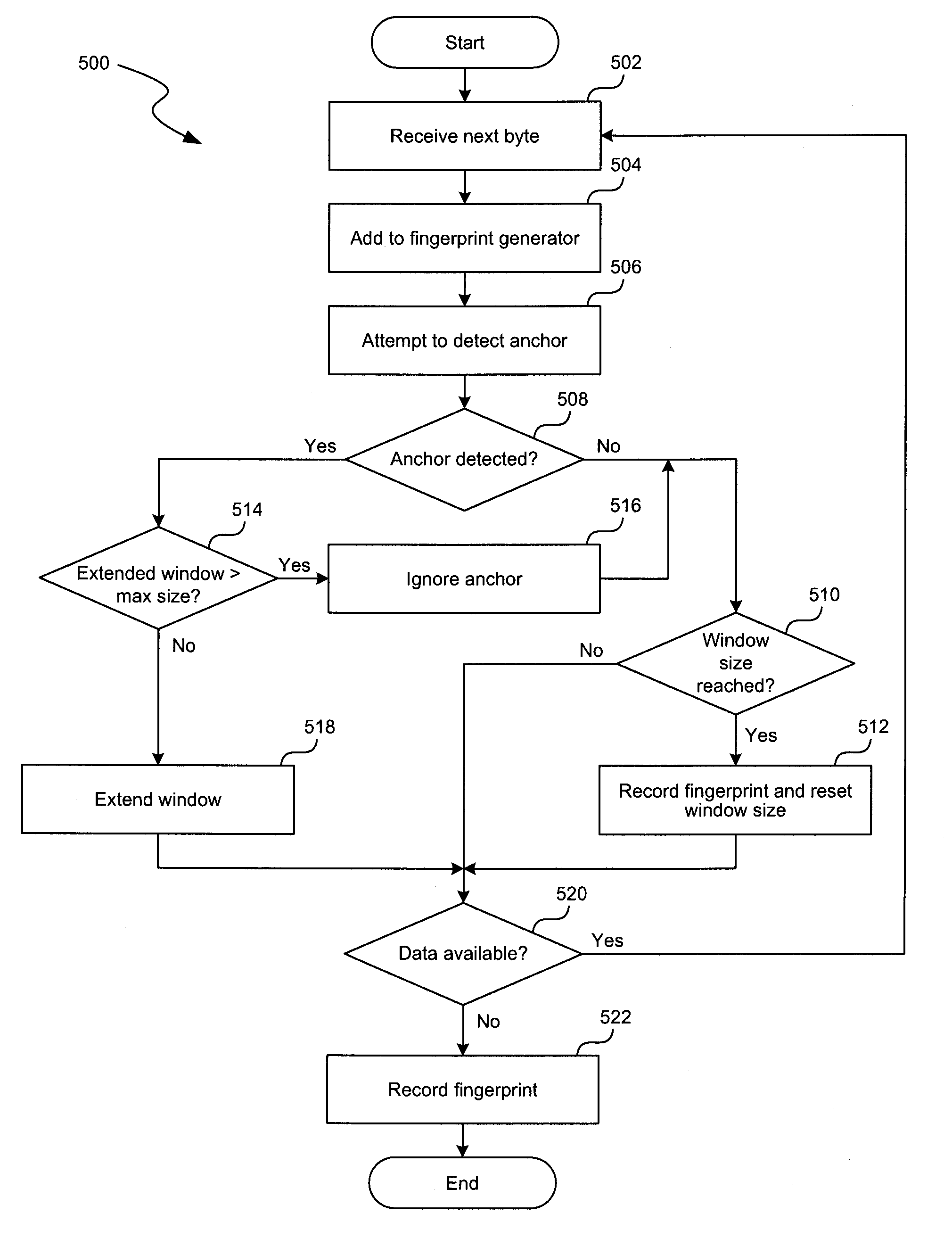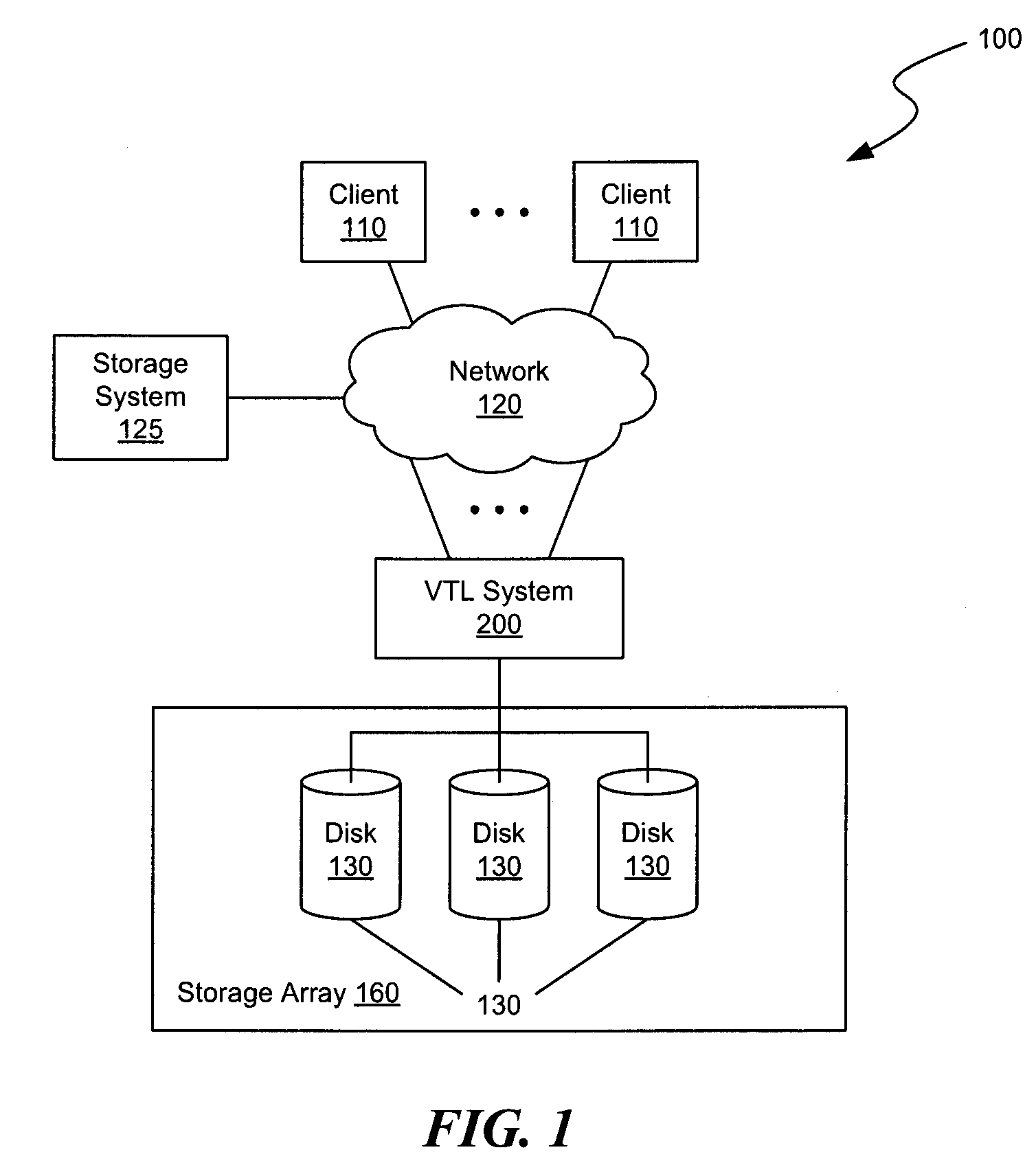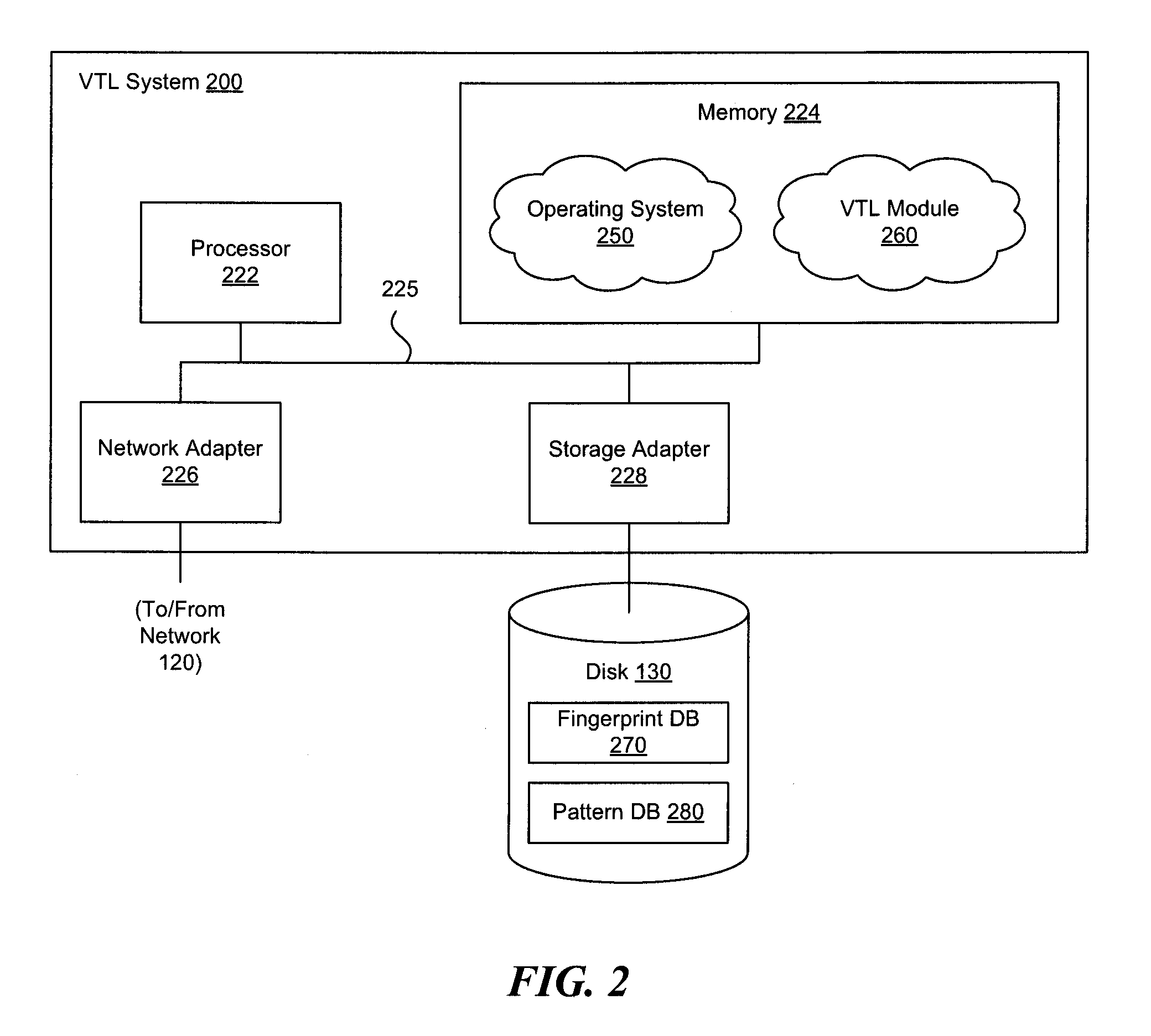System and method for eliminating duplicate data by generating data fingerprints using adaptive fixed-length windows
a fixed-length window and data fingerprint technology, applied in the field of system and method, can solve the problems of wasting significant storage space, slow data access, and requiring that the backup administrator manage a large number of physical tapes, and achieve the effect of not adding significant processing overhead, saving significantly more space, and being robus
- Summary
- Abstract
- Description
- Claims
- Application Information
AI Technical Summary
Benefits of technology
Problems solved by technology
Method used
Image
Examples
Embodiment Construction
[0016]A method and system for generating data fingerprints to de-duplicate a data set is disclosed (hereinafter called “the fingerprint system” or “the system”). The system may be used in a virtual tape library (VTL) system configured to backup data sets that have a high level of redundancy. When a data set is received, the system processes the data set to generate a set of data fingerprints associated with individual sections of the data set. These data fingerprints are stored in a fingerprint database such that the data fingerprint may be used as an index to look up a data segment corresponding to the data fingerprint. When the system detects a data fingerprint matching a stored data fingerprint in the fingerprint database, it replaces the data corresponding to the detected data fingerprint with a reference to the stored data fingerprint. The de-duplicated data set may be stored in a local storage component or replicated to a mirror server using a data network.
[0017]The system gen...
PUM
 Login to View More
Login to View More Abstract
Description
Claims
Application Information
 Login to View More
Login to View More - R&D
- Intellectual Property
- Life Sciences
- Materials
- Tech Scout
- Unparalleled Data Quality
- Higher Quality Content
- 60% Fewer Hallucinations
Browse by: Latest US Patents, China's latest patents, Technical Efficacy Thesaurus, Application Domain, Technology Topic, Popular Technical Reports.
© 2025 PatSnap. All rights reserved.Legal|Privacy policy|Modern Slavery Act Transparency Statement|Sitemap|About US| Contact US: help@patsnap.com



